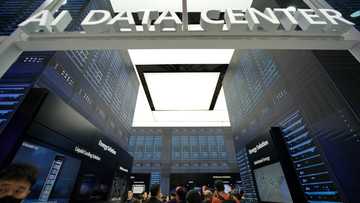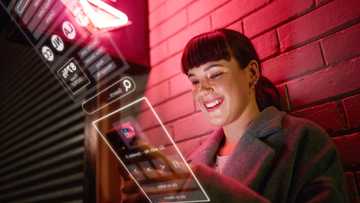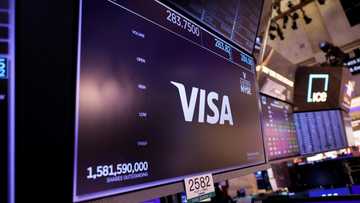DoubleList vs. Traditional Dating Apps: Which One Works Better for You?
Online dating is very common in the current digital age. Whether it be Tinder, eHarmony, or apps that connect with someone of a particular demographic or interest, singles have never had more choices to find romance, or just some fun, at their smartphone fingertips.
However, as the number of users on mainstream dating sites continues to grow, there has also been a silent revolution of sorts, with the development of so-called alternative adult dating communities, whose purpose is strictly no-strings-attached sex, swinger interactions, and sexy storytelling. Among them, one can distinguish DoubleList, which is one of the most feature-rich and fastest-growing adult platforms today.

Source: UGC
But how exactly does DoubleList compare to more traditional dating apps? Which one works better depends significantly on one's preferences and priorities. By examining core features and use cases, we can better understand the strengths and limitations of both models.
DoubleList Overview
DoubleList launched in 2018 following Craigslist Personals’ closure, offering a free platform for adults to anonymously post classified-style listings seeking casual relationships of all orientations. It has quickly expanded, boasting over 3 million members across hundreds of cities globally. Users can explore listings or post their own directly on the official website - visit, which remains the central hub for accessing all of the platform's features.
Location-Based Search
A key advantage is DoubleList’s robust location filtering—covering 248 regions worldwide, users can drill down to neighborhood-specific ads based on proximity. This level of granularity suits short-notice, in-person meetups.
Niche Categories
Listings are segmented by detailed interest tags, from conventional entries like “men seeking women” to more niche requests—empowering explorations into specific kinks or curiosities.
Classified Posting
There are no subscription fees; posting basic text-based ads is unlimited and free. The focus is on directness and privacy, with coded language encouraged over explicit terminology. Email verification reduces spam.
Erotic Stories
Unique to the platform is a large library of user-submitted erotic stories and fantasies. This fosters an open, sex-positive community for discussing taboo topics beyond just arranging hookups.
Traditional Dating App Overview
Platforms like Tinder, OkCupid, or Bumble take a different approach, designed foremost for dating and relationships with appropriate security and identity verification.
Profile-Driven
Traditional apps emphasize detailed personal profiles—photos, bios, linked social accounts—enabling users to pre-screen compatibility before matching. This suits relationship-seekers vetting longer-term partners.
Expanded Search Tools
Parameters like age, location, height, religion, or education afford a level of selectivity absent on DoubleList. Niche sites also cater to demographics like seniors, divorcees, single parents, etc.
Communication Features
In-app chat, audio/video messaging, and virtual date modules allow relationship cultivation via ongoing conversation in a structured environment tied to real identities.
Which Platform Works Better For You?
With core features and use cases contrasted, evaluating DoubleList vs. traditional dating apps becomes an exercise in personal preference. Here are key questions to ask:
What Are Your Dating Goals?
Those seeking no-strings fun and exploration into kinks find DoubleList more fitting, while relationship/marriage-minded singles often gravitate toward profile-heavy apps that enable deeper vetting.
What Communication Style Do You Prefer?
DoubleList’s anonymity shifts focus to spontaneous, in-person meetings rather than virtual rapport-building over days/weeks. If you prioritise instant physical chemistry over online chemistry, it may better suit this approach.
How Important Is Security?
While DoubleList does utilize email verification, moderators, and abuse reporting, there are inherently more risks in meeting strangers compared to identity-verified platforms. Assess your comfort level.
What Features Most Interest You?
If niche categories, geographic specificity, and community stories resonate over questionnaires or virtual speed dating, DoubleList would likely be more engaging based on specialized offerings.
In short, traditional dating apps often provide more structure, security, and relationship tools, but limit sexual openness. DoubleList delivers greater freedom of exploration and adventurous connections, but with additional risks and less vetting.
Ultimately, needs vary dramatically person-to-person. But by weighing your priorities, both models offer viable channels for finding what you seek—be it casual fun today or your future life partner.
Comparing Core User Experiences
To further illustrate the DoubleList difference, let’s compare how a typical user might experience each platform.
DoubleList User Journey
After discovering DoubleList, Amy, 32, seeks some no-strings excitement to spice up her sex life after a recent divorce. She selects her city, then browses listings by various interests like “casual encounters”, “threesomes”, and “women seeking women” (a new curiosity). The ability to filter so specifically appeals more than a mainstream app showing all relationship types.
Reading anonymous story posts, she finds inspiration to explore her bisexual side. Amy describes her fantasy in a personal ad. Over the days, she exchanges emails with intriguing women and couples. Ultimately, she selects a compatible match for a discreet same-day meetup, arranging the rendezvous through coded messages. The experience is thrilling and reconnects Amy with forgotten parts of her sexuality in a judgment-free environment.
Traditional App User Journey
Alternatively, after downloading eHarmony, Jim, 40, completes an in-depth signup questionnaire outlining his personality, interests, and ideal partner criteria. He then receives curated matches in his area, with percentage scores predicting long-term compatibility. Messaging and video chatting for weeks with his top-rated match, Marie, 29, builds intimacy and rapport before their first dinner date. Six months later, the pair agreed to become exclusive girlfriend/boyfriend after assessing aligned life goals and core values early on, thanks to eHarmony’s vetting model.
While Amy and Jim’s objectives differ markedly, each platform enabled uniquely tailored experiences aligned to personal goals around dating, casual, or serious.
The Bottom Line
DoubleList fills a vacant niche with a target audience of alternative adult dating and anonymity, and niche categories can be used to enable sexual openness and exploration between compatible individuals. Conversely, the conventional dating apps are more likely to focus on identity verification and relationship-building features to match singles who are interested in commitment and long-term relationships.
Finally, needs differ from individual to individual. Both DoubleList and longstanding dating sites can facilitate the best experiences with the help of prioritising between security, communication preferences, specialised interests, and relationship ambitions. It is very important to note on what you need as an individual in order to identify the best environment that will give you the connections that you desire.
Source: YEN.com.gh






